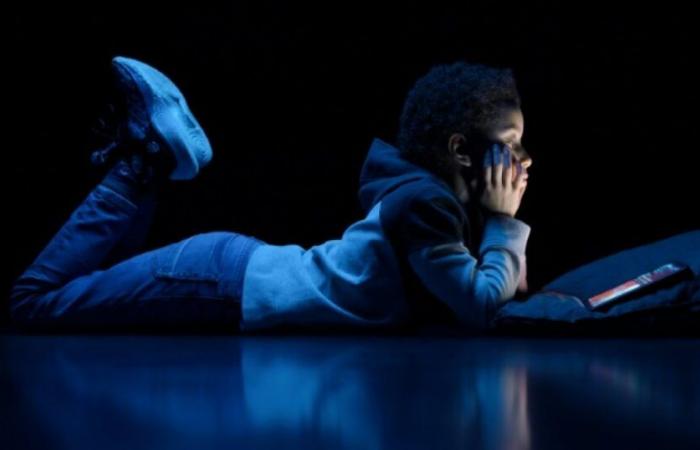Unwelcoming outdoor spaces, fear of accidents or bad encounters: young people are increasingly “indoor children”, raised within four walls and cut off from nature, deplores the High Family Council, a body which calls for rethinking the city from a child's perspective.
“Children go out less and less and spend less time playing in nature,” notes this report from the High Family Council for Children and Age (HCFEA) on the place of children in “the spaces public and nature”, published Tuesday.
“The time spent in public spaces without the accompaniment of an adult and playing outside has decreased in favor of private and enclosed places, and supervised and sedentary activities,” he notes.
The outdoor space is unwelcoming and perceived as dangerous for children: fear of bad encounters, of accidents, danger of motorized vehicles, “narrow and cluttered sidewalks, poorly maintained or non-existent”, roads without shops or without lighting.
Some 77% of middle school students are accompanied during their school-home journey, 60% of children and adolescents' home-school journeys are made by motorized vehicle (32% by car) compared to 38% on foot and 2%% by bicycle, notes the body placed under the authority of Matignon.
– “Bedroom culture” –
The needs of children are, according to her, “little taken into account when planning spaces and territories”, with standards and regulations restricting or prohibiting games (ball, sliding, etc.), exploration of space and experimentation with risks, essential to the child's development.
The report cites a school building project whose entrance could have opened onto a large park. “The elected officials preferred the mineral option, with a large parking lot to drop off the children by car and because in the parks, we ran the risk of there being drug users and syringes,” explains architect Gaëtan Engasser, cited in the document.
“A generation ago, we were happy to take our children out and suggested that they spend time outside with friends and neighbors. Today, when they are outdoors, we tend to see them as abandoned or in danger,” explains to AFP the president of the HCFEA Sylviane Giampino.
Confinement, mobility restrictions, closure of classes, sports and cultural venues during the Covid crisis have reinforced this “bedroom culture” where friendships now take place through social networks and distractions (games, films and videos).
– Best practices –
One in five children have parents who work on weekends, even though they are a favorite day for family and outdoor outings.
The consequences of this withdrawal into the home are multiple: lack of physical activity, obesity, domestic closed doors, loss of social and intergenerational ties, mental health problems, excessive consumption of screens.
France ranks 22nd of the 25 richest countries in terms of physical activity among adolescents aged 11 to 17, according to a study published in 2020 in the Lancet.
Less accustomed to nature, children risk being less aware of its importance, also warns the HCFEA, which refers to an “extinction of the experience of nature” or “environmental amnesia”.
The High Council recommends “opening the city to children” and lists, in this 252-page report, good practices of cities that put themselves at the height of children, in France and abroad.
He recommends developing parks, planted walks, shared gardens, and making room for nature in the city (wastelands, ponds, etc.). Among the suggestions, greening schoolyards, making “the quarter-hour green city”, where a green space is accessible within a quarter of an hour on foot, “designing environments for walking, playing, breaks, meetings, the need for slowness”.






